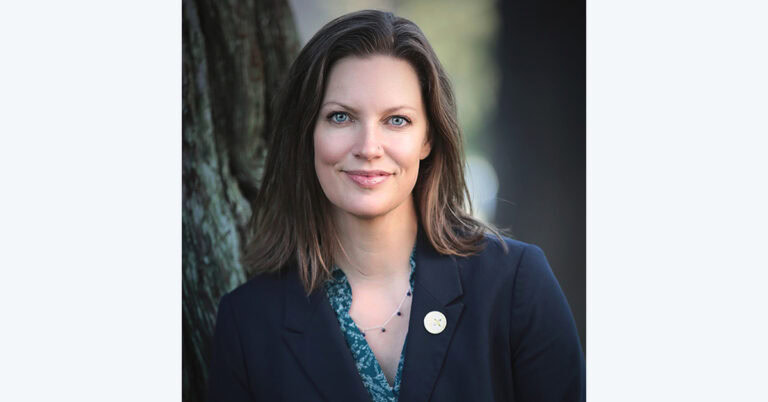Deputy Director
Critical Path Analysis Leads to Action
May 7, 2007 | CCST Newsroom | Contact: M. Daniel DeCillis
The Critical Path Analysis of California’s Science and Mathematics Teacher Preparation System, a project conducted by CCST and the Center for the Future of Teaching and Learning, has met with a positive reaction and spurred action both in the state’s higher education systems and in the Legislature, and has been cited in the US Senate in support of innovation legislation.
“This report helps quantify the true scope of the challenges facing our math and science teacher workforce for the first time,” said CCST Board chair Karl Pister. “There is consensus that the problems can be successfully addressed, and we’re pleased to see momentum building in our high-tech industries, institutions of higher education, and policymakers to make the needed changes and investments.”
 The report highlighted the relatively large percentage of new math and science teachers holding emergency permits or intern certificates, as opposed to preliminary or full credentials, and the growth in projected demand for science and math teachers (over 33,000 during the next decade). It also detailed just how complicated the teacher credentialing system has become, with a profusion of pathways and resources that has led to a fragmented and inconsistently sustained system of recruitment, induction and professional development. It is a follow up to the 2002 Critical Path Analysis of California’s Science and Technology Education, which offered a broader analysis of the overall education system.
The report highlighted the relatively large percentage of new math and science teachers holding emergency permits or intern certificates, as opposed to preliminary or full credentials, and the growth in projected demand for science and math teachers (over 33,000 during the next decade). It also detailed just how complicated the teacher credentialing system has become, with a profusion of pathways and resources that has led to a fragmented and inconsistently sustained system of recruitment, induction and professional development. It is a follow up to the 2002 Critical Path Analysis of California’s Science and Technology Education, which offered a broader analysis of the overall education system.
In response to the challenges highlighted by the new Critical Path Analysis, California State Senator Jack Scott announced the California Math and Science Teacher Initiative on March 7, consisting of a package of three related bills (SB 112, SB 858 and SB 859) intended to increase the math and science teacher pipeline.
“The shortage of math and science teachers in California is reaching a critical point,” said Senator Scott at a press conference announcing the initiative. “Business leaders, as well as educators are sounding the alarm. In order to maintain our economic strength, the state needs well-educated workers…We must make this a priority. That’s why we are introducing this 3-pronged approach that we believe will address the shortage of math and science teachers.”
At the national level, Senator Dianne Feinstein cited CCST’s Critical Path Analysis in a statement of support for a bipartisan measure to strengthen federal investments in educational opportunities for math, science, engineering and technology. The America Creating Opportunities to Meaningfully Promote Excellence in Technology, Education and Science (COMPETES) Act (S. 761) was introduced by Senate Majority Leader Harry Reid and reflects recommendations by the National Academies’ reportRising Above the Gathering Storm.
In addition to the legislation, CCST has convened two meetings on following up recommendations in the report. The first, held on May 18 at the Beckman Center in Irvine, brought together forty representatives from higher education, national laboratories, and industry to focus on expanding professional development opportunities for science and math teachers. The second was an internal meeting of CCST Board and Council members to develop a broader education-related strategy for CCST to pursue over the coming year.
“Other reports such as Rising Above the Gathering Storm have underscored the importance of our science and math education system; the Critical Path Analysis report has helped define the scope of the issues particular to teacher preparation and retention in California,” said Pister. “We are hopeful that policymakers and institutions throughout the state now have the momentum to develop and sustain constructive solutions to these very challenging issues.”

SB 112: Teachers: Basic Skills Proficiency. This bill exempts retired teachers who return to service from basic skills proficiency requirements and specifies that retired teachers do not need to participate in induction programs for new teachers. The intent is to help districts address their local staffing needs by reducing the barriers for retired teachers who are willing to work part-time as classroom teachers, or to provide support and assistance to new teachers.
SB 858: Teacher credentialing. This bill encourages experienced teachers and retiring professionals to become qualified to teach mathematics and science. It also provides incentive funding of up to $2,500 per teacher to school districts and county offices of education to assist teachers to acquire math or science content knowledge.
SB 859: Teacher credentialing: visiting faculty permits. This bill would authorize the Commission on Teacher Credentialing to issue or renew visiting faculty permits authorizing instruction in math or science to individuals who satisfy specified requirements, including having a minimum of 6 years of full-time teaching experience in an accredited California community college.




